How to Buy a Wedding Ring: The Ultimate Guide

Most women have a very clear idea of what they want their engagement ring to be like. From the cut of the stone to the setting and the style of the band, every aspect is carefully thought through. However, a pair of important pieces of jewelry that often go overlooked: the wedding bands.
You certainly can’t go wrong with a classic, clean, high-polished band. But these are rings you and your significant other will wear every single day for the rest of your lives. It’s a mutual symbol of love, commitment, and respect. So it’s worth exploring all the options available to find a style to fit both of your personalities.
At Ritani, we want you to enjoy the process of selecting and personalizing your own bands. We prepared this guide to answer the most common questions and concerns when buying wedding rings. Plus, you will find helpful tips and discover all the different styles and options available.
Selecting The Metal For Your Wedding Bands
There are different material options available for men and women.
Gold is probably the most popular metal for wedding rings. It has been used in jewelry for millennia due to its malleability and anti-corrosive properties. Pure gold can be a little too soft for jewelry, so it’s alloyed with other metals to add hardness and make it more resistant to wear and tear. Depending on the ratio between pure gold and alloyed metals used, we can get 18kt (75% pure gold) or 14kt (58.3% pure gold).
Yellow Gold
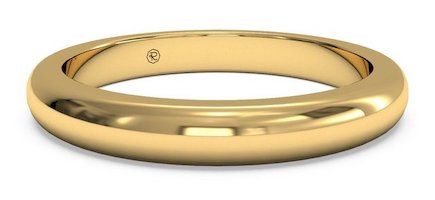
Yellow gold wedding rings will suit you best if you have a warm skin undertone. Green veins are often indicative of a warm undertone. Another tip is to check your makeup; if you find words like “peach,” “olive,” “golden,” or the letter “W” in front of your foundation tone, you have a warm undertone. Wearing yellow gold will compliment your natural look.
The undertone method is just a reference. You can have a preference for this rich yellow color despite being neutral or cool-toned and look fantastic wearing it anyways.
Rose Gold
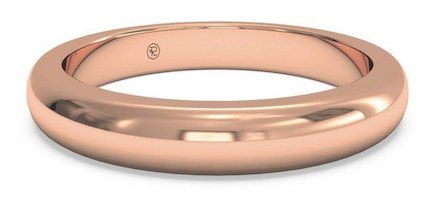
Gold is naturally yellow, so what exactly is rose gold? The secret is in the metal alloy used; more copper is added to the mix to give the gold that soft reddish tone. Rose gold is the perfect alternative for those who feel yellow gold might look too strong against their skin but still want the feeling of a warm metal tone. It is often deemed as romantic and sometimes perceived as too feminine. So, discuss this option with your partner if you are leaning towards rose gold matching wedding bands.
White Gold

White gold achieves its color by incorporating white metals, such as nickel, silver, or palladium, into the alloy. To maintain its white appearance, white gold is routinely rhodium plated. This doesn’t mean your white gold wedding ring will turn completely yellow over time, but it might look more dull and grayish than pure white until you re-plate it.
White gold is harder to scratch than platinum, and it’s slightly more economical, so it presents interesting advantages to consider.
Pay attention to your handbag collection if you’re split between yellow and white gold. Is the hardware on most of your bags silver or golden? How about your shoes, belts, and other accessories? Check the color of buckles, locks, tags, zippers, and other metal components in your wardrobe. Chances are you already gravitate towards one tone over the other. Subconsciously, we know what looks best on us.
Platinum

Platinum can be another excellent option for you if you love the look of silvery metals. Unlike white gold, platinum is a naturally occurring material, and it doesn’t require any plating to achieve or maintain a white luster. It is, however, more prone to scratches and commands slightly higher prices.
Alternative Metals For Men
Not all men love wearing jewelry; we get it. Even a simple band can feel off or look strange for those who are not used to wearing any jewelry at all. If this sounds like your beau, don’t worry. At Ritani, we have alternative metals for unique wedding rings for men.
Tantalum
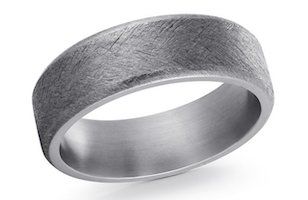
Tantalum is rare, lustrous gray metal, slightly darker than platinum. It’s notable for its high resistance to scratches and breakage. It is nickel-free, hypoallergenic, and—unlike other alternative metals—can be resized.
Cobalt
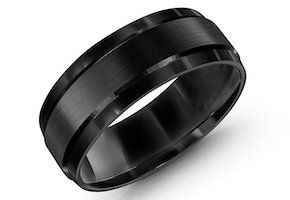
Another fantastic hypoallergenic option is cobalt. Cobalt comes with an edgy, bold, masculine look and can be found in black or silvery blue. It is definitely an understated option that can be easily styled with sporty and casual looks.
Tungsten
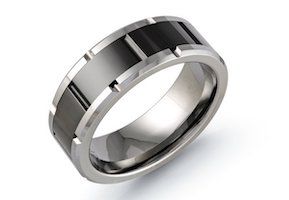
Tungsten is a better-known alternative. It offers remarkable durability, but it cannot be resized. However, we will exchange your tungsten band for a different size one time within the first 12 months of purchase at no cost to you.
Wedding Rings For Women
The Classic Wedding Band
If you have a minimalist, elegant style and prefer understated looks, the timeless, simple band might be the best option for you.
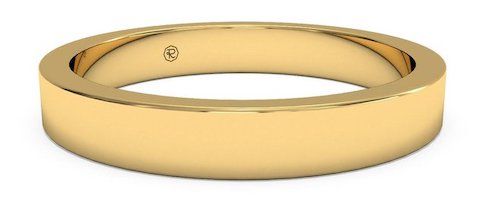
Our Classic Square-edge Wedding Ring, shown above in luxurious 18kt yellow gold, is a traditional choice that will easily integrate with your looks and style.

If you’re looking for something softer and more comfortable to wear, take a look at our Women’s Classic Wedding Ring in platinum. The 2.6 mm wide band has a smooth, rounded edge you will love.
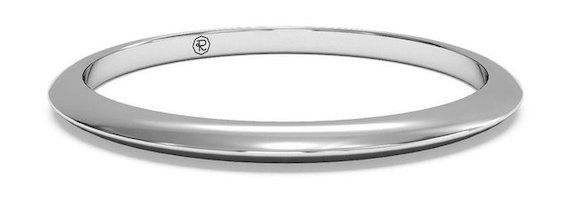
The Classic Thin Knife-edge Wedding Ring in 18kt White Gold is an attractive alternative to add a modern touch to the typical simple band. Its thin profile makes it look more delicate.
Diamond Wedding Bands
Diamond wedding bands pair nicely with most engagement ring styles and will add soft sparkle to your wedding set. Diamonds can be set in the band in a variety of different ways, creating different looks. Here are some different types of diamond wedding rings.
French-Set Diamond Wedding Bands
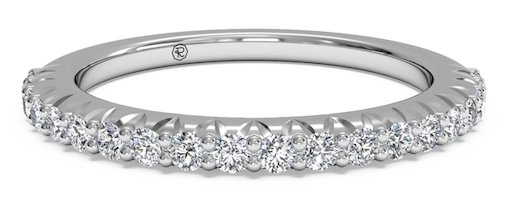
Diamonds that are French-set are raised and secured by tiny prongs. Since the diamonds are raised, light can easily enter and exit the diamonds, creating maximum sparkle.
Channel-Set Diamond Wedding Bands
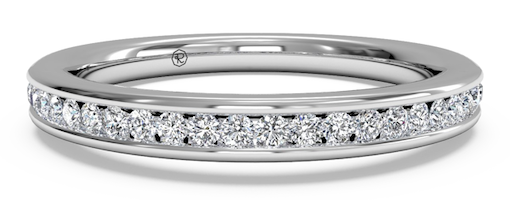
In channel-set wedding rings, a slim band of metal covers the edge of the diamonds, holding them in place and creating a sleek, modern look. This setting style is considered the most secure for wedding bands.
Pavé Diamond Wedding Bands

Pavé means "paved" in French. Pavé diamonds are set closely together, creating the appearance of a continuous row of diamonds. Tiny beads secure each diamond. The wedding ring above sparkles in three different directions thanks to the three rows of pavé diamonds.
Micropavé Diamond Wedding Bands
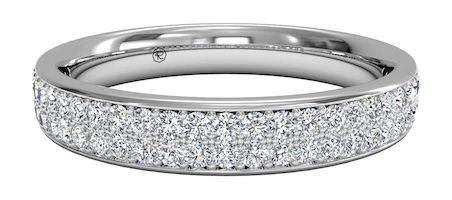
Micropavé diamond wedding bands are crafted with the same technique as pavé settings, but they utilize even smaller diamonds.
Eternity Wedding Rings
Eternity rings are popular anniversary gifts, but they have become one of the most sought-after styles for wedding rings.
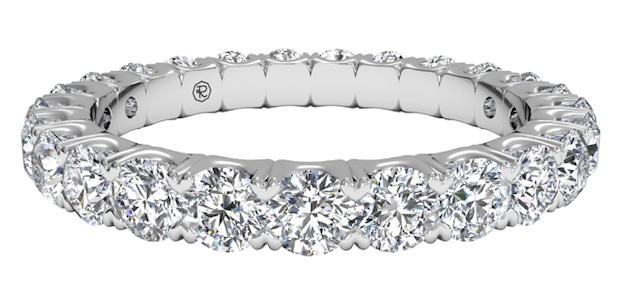
Eternity rings feature diamonds set in a full circle around the band. If you want a sparkling option to add more diamonds to your everyday jewelry look, an eternity style is the best wedding ring option for you.
Half Eternity Rings
Half-eternity rings are a type of wedding band that only features diamonds in one half of the band.

The breath-taking Nine-Stone Asscher Cut Diamond Wedding Ring above is a great example of a half-eternity wedding band.
Read The Ultimate Eternity Ring Buying Guide
Vintage-Inspired Wedding Rings
Natural motifs were popular for jewelry designs during different art periods.
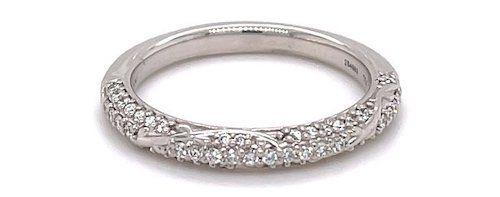
Our Three-row Diamond Vine Wedding Ring plays with a diamond pavé that’s accentuated with delicate vine lines.
Milgrain (shown below) is a decorative technique involving a tool that creates miniature metal pearls on the ring's surface.

The milgrain technique achieved peak popularity in the early 20th Century, which is why wedding bands featuring this detail have a vintage feel to them.
Modern Wedding Rings For Women
We have spectacular design options for alternative brides who might be looking for something edgier or less traditional.
Stackable Wedding Rings
Stackable wedding rings are often thinner with unique, eclectic designs. We have spectacular design options for alternative brides who might be looking for something edgier or less traditional.

For the bling lovers who also want to display the band’s design, we have the Calanthe Diamond Wedding Ring, shown above in 14kt yellow gold. The six high-polished points create a hexagon-like profile.
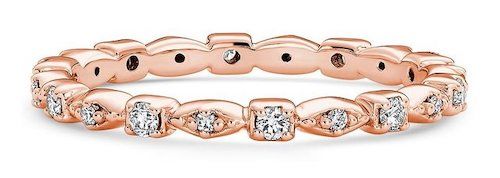
Our Astra Stackable Diamond Wedding Ring in 18kt rose gold (shown above) is a unique style that adds interesting shapes to your wedding stack.
Curved Wedding Rings
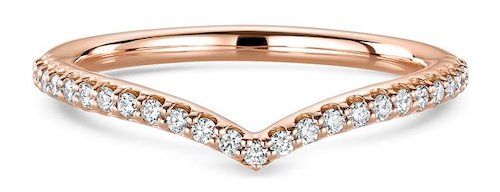
Curved wedding rings gently bend around your engagement ring, creating a unique look. This style is also great for stacking with other rings.
Wedding Bands For Men
Classic Wedding Bands For Men
The Men’s Comfort-Fit Wedding Ring shown below is available in white, yellow, rose gold, and platinum. This style of the ring features a domed profile which offers maximum comfort. The simplicity of the band is both elegant and versatile.
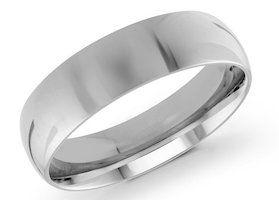
Two-toned gold bands are a great alternative if your man is indecisive and can’t pick between yellow or white gold. Another point for two-toned wedding bands is they pair perfectly with two-toned watches like steel and gold combinations.
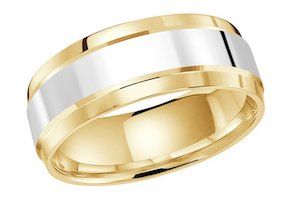
The exquisite yellow gold inlay detail of the next ring is proof that two-toned wedding bands can have a refined, sophisticated look.
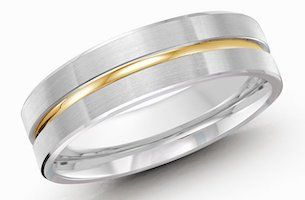
Textured Wedding Rings For Men
Men’s wedding rings often display special finishes to add texture and give them a rougher, more masculine look. Here are some of the most popular textures for men’s wedding bands.
Hammered Finish
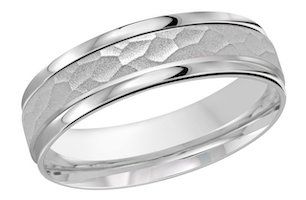
Sandpaper Finish

Satin Finish
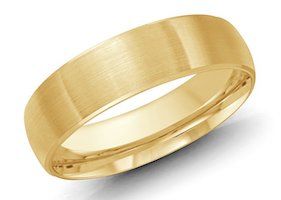
Learn More About Different Types of Ring Finishes
Create A Custom Wedding Ring
Did you know you can create a custom wedding band to match your engagement ring?
At Ritani, we can work with your engagement ring to create a unique, bespoke design that will harmoniously fit your ring. You will love the look and feel of a wedding set designed to work together.
Matching wedding band sets are also a possibility. If you cannot find a ring style that’s available for both men and women, we will gladly design wedding bands that adapt to your and your partner’s taste.
Get in touch to design a custom wedding band set.
If custom is not an option for you, you can still try to mimic design elements you already find in your engagement ring. For example: find a wedding band featuring the same diamond cut as the center diamond of your engagement ring.
Learn How To Match Your Wedding Ring To Your Engagement Ring
FAQs
What Is The Origin Of Wedding Rings?
Wearing rings to symbolize a union is a long-standing tradition that can be traced back in history to ancient civilizations. There are records of wedding rings being used over four thousand years ago in Egypt. The first iterations were quite modest, mostly made of braided plants, leather, and bone. The meaning, design, and material of wedding rings has certainly evolved from those ancient practices.
Although the concept of engagement rings and wedding bands as we know them today is a slightly more modern practice, Roman grooms were already known to give their intended an iron or gold ring as part of completing a wedding agreement. The annulus pronubus, as it was called, was the precursor of the modern-day engagement ring.
What Is The Difference Between Engagement And Wedding Rings?
Different kinds of promise and marriage rings have been used throughout history among different cultures until evolving into the common traditions we practice in Western cultures.
The main two differences between engagement and wedding rings are their meaning and the time when you start wearing them.
It is customary to officially communicate the intention to marry with an engagement ring. This is an important step in every relationship because it formalizes the promise to stay together for life. From the moment an engagement is celebrated, couples start planning their wedding. Traditionally, only the woman would get an engagement ring, but more and more, we are starting to see couples who both wish to wear an engagement piece, especially in the LGBTQ+ community.
After the wedding, some choose not to wear their engagement rings daily and reserve them for special or formal occasions only. If your lifestyle or line work makes it difficult for you to keep wearing your engagement ring, wearing it as a necklace is a common alternative.
Wedding rings are worn by both partners for life from their wedding day on. During the wedding ceremony, couples will exchange rings, typically while reading or reciting their vows. For non-religious or civil ceremonies, couples can exchange rings before signing their marriage certificate.
On Which Finger Should I Wear My Wedding Ring?
In the Western world, it is traditional to wear wedding rings on the left hand’s fourth finger. We adopted this custom from the Romans, who thought there was a vein running from our hearts all the way to this finger, called vena amoris, the vein of love. This was just a belief and was later proved wrong by science. But the discovery came too late as this romantic tradition was already well cemented, so much we still uphold it today.
In Which Hand Do You Wear A Wedding Band?
In some European and Asian countries such as Spain, Portugal, Greece, Norway, Denmark, Russia, and India, it is common to wear wedding bands on the right hand.
Do Men And Women Wear Their Wedding Bands The Same Way?
Many other countries and cultures have different styling rules, some of which involve women wearing their bands differently than their partners. For example, Brazil, Germany, and The Netherlands have a combination style where the engagement ring moves to the opposite hand after receiving the wedding band, wearing each ring in different hands.
As you can tell, there’s not one single answer or rule to follow; it all depends on your cultural background and location.
Are Matching Wedding Rings Necessary?
Some couples prefer to buy their wedding rings as a set where the design between each ring has very little variation besides the size and width of the band. This is a very practical approach but tends to limit the design options since something too delicate and sparkly might not translate well into a masculine version or vice-versa.
Pros Of Matching Wedding Bands
You will probably select a design that is timeless, minimalist and goes with every kind of fashion style and occasion.
It’s visually appealing to share the same piece with your partner.
It becomes evident you are a wedded couple when meeting new people together.
Cons Of Matching Wedding Bands
- You might have a hard time finding a style that you both love. You can have disagreements on the choice of metal or the kind of design. Women love sparkling jewelry, while men might not be so open to a matching diamond-embellished band.
- Coming to a compromise in order to get matching bands means you might not love your wedding band as it won’t reflect your personality as you would have liked.
As a general rule of thumb, if you and your partner share a similar style in jewelry or fashion, then matching wedding bands makes perfect sense. But, if you have very different personalities and styles, don’t try to force it. Selecting a band that makes each of you happy is ultimately the goal.
How Much Should Wedding Rings Cost?
Wedding bands don’t follow any rule of thumb. How much to spend on your wedding rings it’s entirely up to you. If you are on a budget and are looking for economical options, select 14kt gold alloys, and look for models with no diamonds. This way, you can find wedding bands in the $500-1,200 range.


